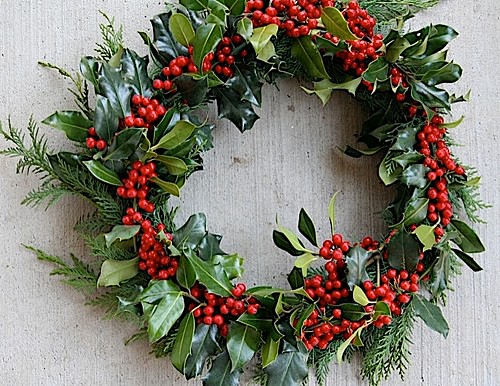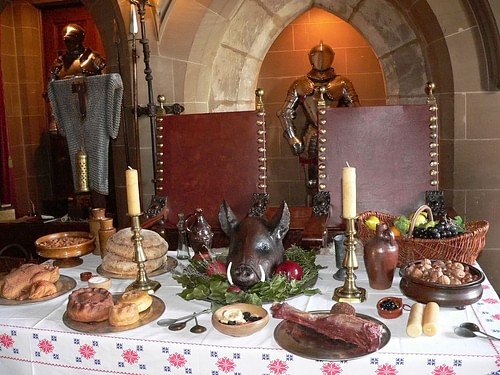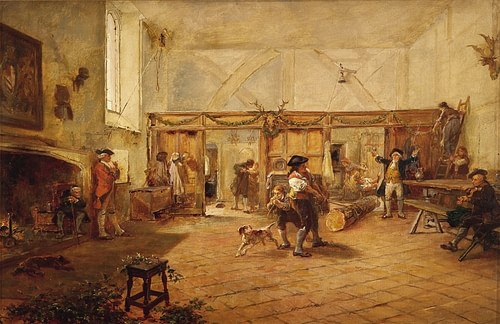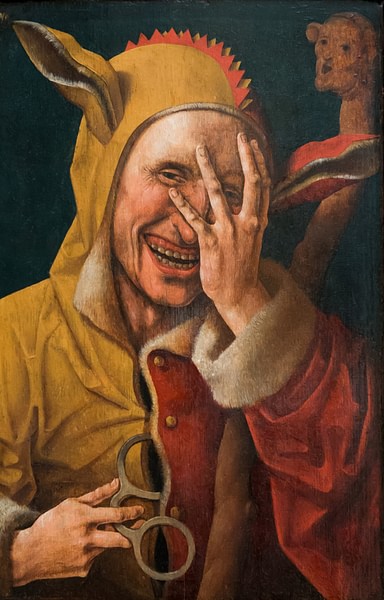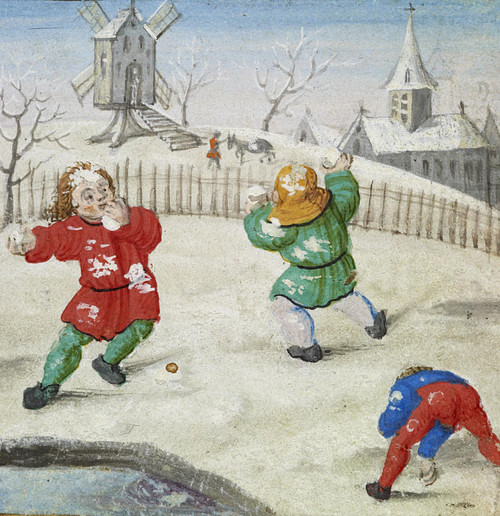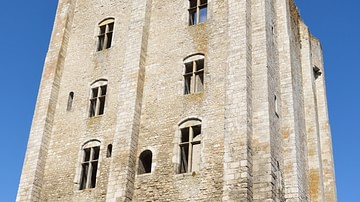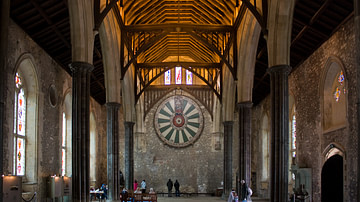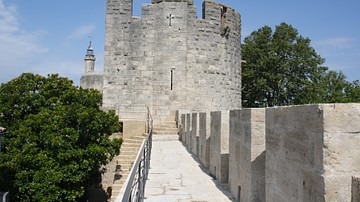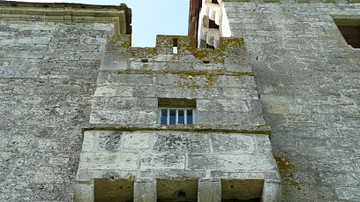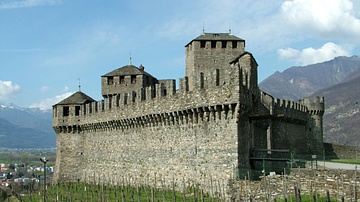Christmas was one of the highlights of the medieval calendar, not only for the rich but also for the peasantry. For the longest holiday of the year, typically the full twelve days of Christmas, people stopped work, homes were decorated and a Yule log burned in the hearth. Gifts were exchanged, colourful church services enjoyed and merry feasts were eaten by all where there was better food and more of it than at any other time in the year. There were plenty of songs, dancing, pantomimes and games, too. For many, just as today, Christmas was the best of times.
The European medieval calendar was not short of holidays: each season had its own special Christian celebration, often based on older pagan traditions. Medieval holidays were a chance to have a much-needed rest from the usual daily toil and to socialise at family meals where the typical dreary menu of the poor was replaced by such rarities as meat and fish and the table of the rich was adorned with exotica like roast peacock. Christmas was the longest holiday of the year by far and lasted from the night of Christmas Eve, the 24th of December, to the Twelfth Day, the 5th of January. Mid-winter was a time of year which saw a lull in agricultural activity and consequently many peasants were permitted by their lord to have the entire two weeks off. The season also involved gift-giving and decorating the home with garlands and wreaths of winter foliage. As one description of 12th-century CE London by William Fitzstephen records:
Every man's house, as also their parish churches, was decked with holly, ivy, bay and whatsoever the season of the year afforded to be green.
(quoted in Gies, 100)
Holly, with its glossy dark green leaves and bright red berries, has been considered the ideal winter decoration since antiquity. Ancient Celtic druids thought it sacred and able to ward off evil spirits while the Romans used it as a gift to show esteem and goodwill. Mistletoe is another long-used decoration which ancient people thought a bringer of fertility, protector of crops and something that kept away witches. Long before the Christmas tree took centre stage in the 19th century CE, a double ring of mistletoe was the centrepiece of many a home's decorations, under which couples could kiss, removing the jewel-like berries with each peck.
The Church at Christmas
Naturally, in the very religious communities of medieval times, the local church was a focal point for the Christmas celebrations and services were well-attended by all classes. Over time the traditional services for major Christian holidays became more elaborate and Christmas was no exception. One development from around the 9th century CE was 'troping' which was to add extra dialogues and songs to the service. An example of troping in the Christmas celebration was an elaboration on the question which choirs sang: Quem quaertitis in praesepe? ('Whom do you seek in the manger?'). One half of the choir would sing the line and then the other half did. This eventually led to a dramatisation using individual speakers and actors which resulted in the presentation of nativity plays with the Magi and King Herod playing prominent roles. Another play which became popular in church services of the festive period was The Prophets, in which a priest conducted a dialogue with various prophets such as Jeremiah, Daniel and Moses and choir boys played dressed up bit-parts like a donkey or devil.
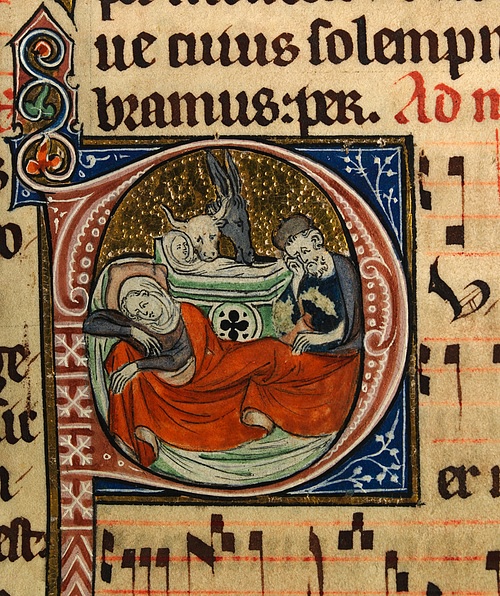
The Feast of the Holy Innocents (Childermas) on 28th of December commemorated King Herod's failed attempt to murder the infant Jesus by ordering the execution of all children in Bethlehem under two years of age. The church on this day, perhaps bizarrely considering the gravity of the occasion, indulged in a bit of traditional festive role-reversal with choirboys taking the place of the bishop and other higher clergy to conduct services and even to lead a torchlit procession. The celebration of the Feast of the Circumcision, held on the 1st of January, was even more outlandish, which perhaps explains its other name of the 'Feast of Fools'. Minor clergy would wear their clothes inside out and lead an ass into church where, upon arrival at the altar, they would burn incense made from old shoes, eat sausages, drink wine and make the sounds of a donkey.
The local clergy, if not invited to their nearest lord's castle, celebrated with a fine meal of rarities at home. Larks, ducks, and salmon could appear on the menu, or perhaps a kid, and we know one abbot of Ramsey Abbey in England reserved for himself a wild boar each Christmas dinner. Even monks had a treat or two at Christmas. The diet of those in medieval monasteries was quite good anyway but Christmas feasts included more meat and fish than usual. We also know that at monasteries such as at Cluny Abbey in France, the monks received a new gown and had one of their twice-yearly baths at Christmas (any more was not permitted).
Christmas in a Manor
Amongst the landed aristocracy, comfortable in their castles and manors, Christmas gifts such as fine clothes and jewellery to wear for the season were exchanged on the 25th of December. There was another round of gift-giving on the 1st of January, too. Known as 'first-gifts' they were thought to be an omen of a person's fortune in the coming year. Much like today, though, the real joy of Christmas for many was the food on offer.
Usually held in the Great Hall of a castle or manor, the setting for the Christmas meal for the aristocracy was suitably splendid with high wood-beam ceilings and at least one roaring fire. The hall was made even more impressive with festive garlands of holly, ivy and other seasonal greenery. The tables were set with the usual knives, spoons and a thick slab of one-day-old bread (a trencher or manchet) to be used by way of a plate for meat. Christmas diners were also treated to the luxury of a change of tablecloth after each course. Two diners shared a bowl for washing hands (everything except liquids was eaten with the fingers), another bowl for soups and stews, and a small bowl of salt.
Served as an early lunch, the first course was typically a soup, broth or weak stew with some meat at the bottom. The second course might be a vegetable stew (porray) of leeks and onions. The rich were fortunate enough to have meat as their next course on ordinary days – rabbit, hare and chicken, for example – but Christmas saw finer meat delicacies, fish (e.g. salmon, herring and trout) and seafood (e.g. eels, oysters and crab) courses presented to the guests. Meats were roasted on a spit over an open fire. Besides legs of beef and mutton, there was veal, venison, goose, capon, suckling pig, duck, plover, lark and crane, to name a few. A special Christmas dish the cooks might prepare to wow the guests included a boar's head on a platter or a swan or peacock roasted in its feathers. Sauces added more flavour to many dishes and, thickened with breadcrumbs, they contained wine or vinegar, and herbs and spices.
Dessert consisted of thick fruit custards, pastries, nuts, cheese and luxury fruits like oranges, figs and dates. There were also entremets – various decorated nibbles glazed with sugar and honey – which were served before the dessert course at Christmas and other feasts. To drink there was red and white wine (from a cup shared with one's dining partner) which was drunk young as it had a short shelf-life. Wine was often mixed with water or sweetened with honey or sugar. Alternatives were cider and ale, although the latter, made from grains and fermented with yeast, was considered a lower class drink. Beer made using hops would only appear in the late Middle Ages. Dessert might be accompanied by a jug of spiced wine. While all this feasting was going in the Great Hall, the servants of a castle were not forgotten as traditionally they were given better food at Christmas such as geese and hens. Finally, the leftovers of the feast were taken outside to the waiting poor.
The manor dining table might have had some surprising guests as serfs on the castle's estate did get to live it up a little at Christmas when, by tradition, they were invited to the manor on Christmas day for a meal. On some estates the invitations were restricted to just two lucky recipients, traditionally one of the poorest and one of the wealthiest peasants who could also invite two friends along. Unfortunately, most peasants invited to their local lord's abode had to bring along their own plates and firewood, and of course, all the food had been produced by themselves anyway. However, they did get free ale and it was at least a chance to see how the other half lived and relieve the dreariness of a country winter.
A Peasant Christmas
A peasant's Christmas was obviously rather less grand than that enjoyed in the local manor or castle and, for them, the season did not start well. Serfs, already subjected to all manner of odd fees over the year, were expected to give a 'gift' to their lord at Christmas of extra bread, eggs and perhaps even a valuable rooster or a couple of hens. In contrast, free labourers on the estate, especially the more important ones such as the estate's shepherd, swineherd and oxherd, received presents from the lord, typically a bonus of food, drink, clothes and firewood. It is a tradition which continued into later centuries when household servants received a box of gifts on the 26th of December, hence the name of that day in Britain: Boxing Day. Children's gifts from their humble parents included such simple toys as spinning tops, whistles, stilts, marbles, dolls, and figures made from wood or clay.
Peasants would have decorated their homes much as aristocrats did, with greenery such as holly being readily available for those who searched for it. An old, possibly pagan tradition persisted, which was the burning of a Yule log. Actually a sizeable piece of tree trunk, the log was lit on Christmas Eve in homes of all kind and kept burning for the twelve days of Christmas. For the special meals of the holiday peasants ate that rare delicacy of – usually boiled – meat, treated themselves to cheese and eggs, ate cakes and drank ale. Of the latter there was certainly lots, the brew typically made by peasant women.
The 1st of January was important as people hoped for better fortune in the coming year. A superstition developed, like the gifts the rich exchanged on this day, that it was terribly important who the first person to visit one's home was on New Year's Day. Called 'first-footing', certain characteristics were considered desirable in this first visitor: a male with a dark complexion, perhaps fair-haired and, best of all, with flat feet.
Christmas Entertainment
There were all kinds of entertainments on offer over the Christmas period. Drinking alcohol was the most popular of all and the fact that merry-making could easily get out of hand is attested by the common custom of lords paying special watchmen to guard their estates in case of riots. A record from an estate near Saint Paul's Cathedral in London tells us that watchmen were set from Christmas Day to Twelfth Night and that these men were recompensed by 'a good fire in the hall, one white loaf, one cooked dish, and a gallon of ale [per day]' (quoted in Gies, 208). Even if drinking such large quantities was relatively common and the ale weak, with four and a half litres of ale per watchman it is a wonder they themselves did not get a bit rowdy.
More genteel festive entertainment included monks touring and performing plays in private residences which told key episodes from the Bible, especially, of course, seasonal topics such as the Massacre of the Innocents by Herod. Similarly, in cities, medieval guilds put on public pageants where wagons went through the streets carrying people dressed as personalities from the Bible's Christmas story. Troupes of masked pantomime artists known as mummers went through the streets, too, accompanied by bands of musicians. Sometimes numbering over 100 revellers, they dressed in outlandish costumes as lords, cardinals and knights, and even ventured into people's homes to dance and play dice. Receiving food and drink in return for their entertainment, mummers often performed short plays with scenes from familiar legends such as Saint George and the dragon.
There were games like cards and dice (which included a bit of gambling) and board games such as chess, checkers, backgammon and Nine Men's Morris. Traditional Christmas games included the 'king of the bean' which permitted the person who found a hidden bean in the bread or a special cake to be 'king' or 'queen' of the feast. That honoured person then had the right to lord it over everyone else who often had to mimic whatever action the king or queen did at the table. The game was traditionally played on Twelfth Night and was an example of the tried-and-tested role-reversal hilarity which went back to Rome's pagan December festival of Saturnalia.
Christmas meals were followed by more drinking of wine or beer, singing of songs, including carols, and group dancing to music from pipes, flutes, lutes and drums. Professional acrobats and jongleurs (minstrels) performed their tricks and witty verses. Folktales were told, embellished and re-told every year, puppet shows were put on and people played parlour games, many of which survive today such as blind man's buff and prisoner's base. Another such game involved one member of the party being dressed as a saint while everyone else had to make them an offering (no doubt, an amusing one) which they had to do without smiling and resisting the antics of the saint or else they themselves became the saint. Another game was 'The King Who Does Not Lie' when the 'king of the feast' might ask a question to any guest who, if they answered truthfully, could ask a question in return. Such games were, of course, a chance to show one's wit and skill at wordplay, to embarrass a friend or to find out a sweetheart's inclinations.
For the more energetic there were sports such as feats of strength, archery, wrestling, bowling, hockey and medieval football where the goal was to move the ball to a predetermined destination and there were few, if any, rules. Sliding on frozen lakes was a popular activity in winter, too. Alternatively, by strapping the shin bones of a horse to the feet and grabbing a pole for propulsion, the courageous could try ice skating.
The End of the Holiday
Christmas through the ages has witnessed festive fun and frolics and so, inevitably, the return to ordinary working life must have been something of a shock in the medieval period after this longest of holidays. However, even then peasants made a celebratory game of the proceedings by, for example, holding a plough race at sunrise on the first Monday after Epiphany, known as Plough Monday. There was another tradition, perhaps again to lighten the burden of returning to the daily toil, on 7th January, also known as Saint Distaff's Day. This day was, “a day of carnival, an occasion for 'misrule', for 'comic battles between the sexes' in which men set fire to women's flax and women made sure men got soaked” (Leyser, 225).
